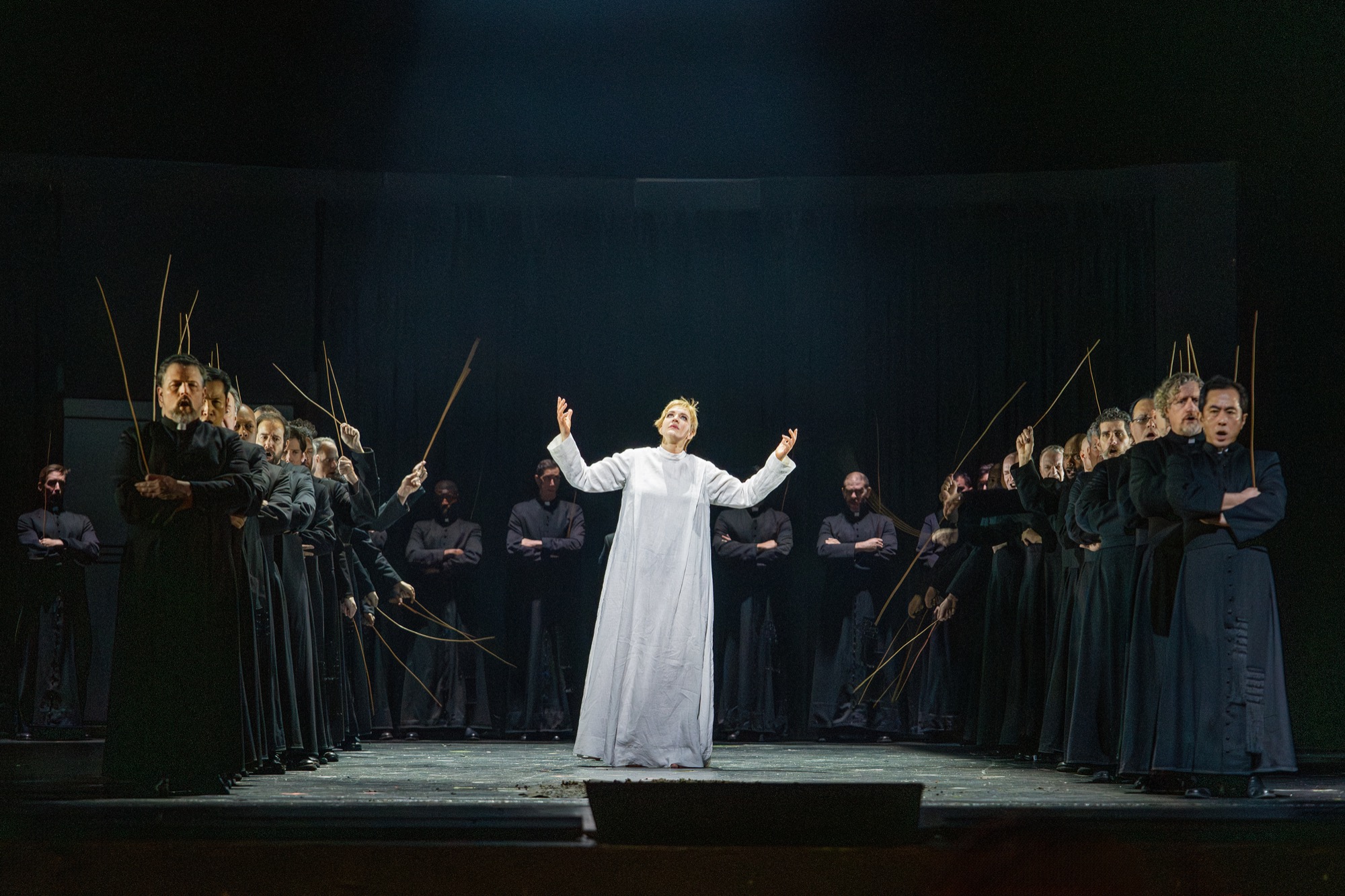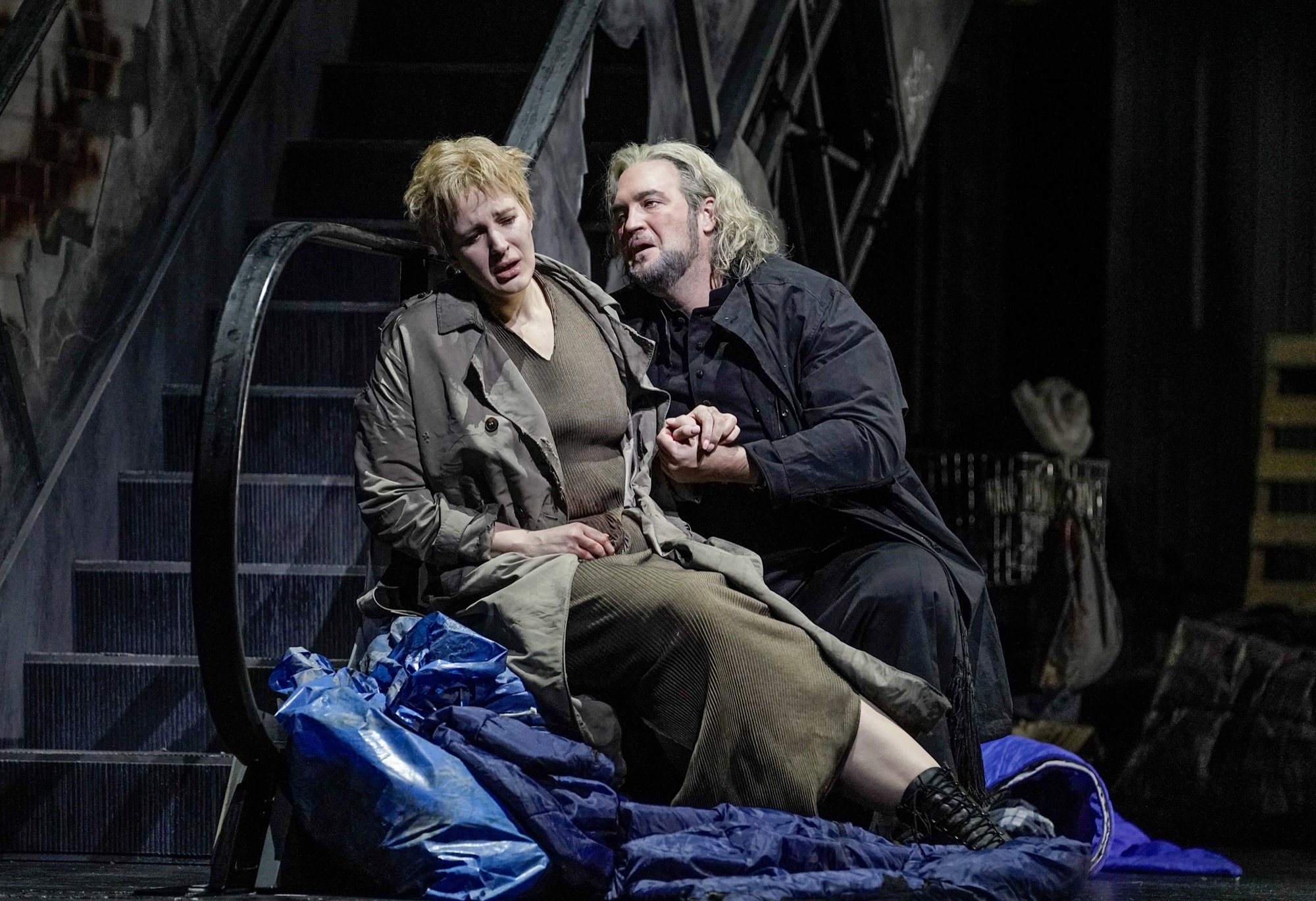The whole world can change in one small but devastating moment.
This season, the Met Opera presents its first new production of Verdi’s La Forza del Destino in 30 years. The tale of star-crossed lovers, war, and revenge is given a contemporary staging that showcases the ravages of military conflict. Norwegian soprano Lise Davidsen made her highly anticipated debut as the protagonist Leonora, and she delivers stupendously. The singers and orchestra soared to transcendent states through Verdi’s sublime music at the March 1 performance, making for a thrilling adventure of a production.
The opera begins with three tones in the brass that spell possible calamity. These three notes recur as reminders of fate’s inevitabilities. Like fate, the plot is hard to discern, and is indeed unwieldy, unfolding with a chain reaction of events. In his laudatory 1918 review of the Met’s debut production, published in The New York American, Max Smith wrote that “opera-goers should know the story of La Forza del Destino in advance. It is not easy to grasp without further elucidation [sic] what the performance provides.” I would agree. And for this piece, I will sketch out the opera’s beginning.

The premise is simple enough: Leonora, the beautiful daughter of an important general, is deeply in love with the poor Don Alvaro (Brian Jagde). He comes by to elope with her on the night of her birthday, after a grand party, but she wishes to have one more night with her father, the Marquis of Calatrava. After Alvaro delivers a sonic guilt trip, she agrees to go. But her father interrupts them, and by accident, Alvaro’s gun goes off, killing the Marquis. Upon his death, he curses Leonora. Has her fate been sealed? Her father’s accidental death destabilizes society and leads to a devastating war. People scatter. Leonora’s brother seeks vengeance. Will the two lovers ever find each other? Much goes awry as well-meaning people face their destinies, seeking refuge and retribution as they untangle life’s maddening difficulties.
The aesthetics of opera staging come and go with changes in taste, but one element remains central to the success of a show: having an extraordinary leading lady. Ms. Davidsen, in her debut as Leonora, made a profound impression. The extraordinary dynamic range of her voice, always with a gorgeous tone, summoned all of Leonora’s joys and apprehensions. The audience was thrilled; her vocal fireworks elicited enthusiastic acclaim from the audience. Tenor Brian Jagde as Alvaro was also a tour de force and received a similar reception. Soloman Howard, as the Marquis de Calatrava and Padre Guardino, sang with grandeur. Judit Kutasi as the warmongering fortune teller Preziosilla was also fantastic, particularly in the uproarious “Rataplan” chorus.
If you enjoy music that oscillates between states of anxiety and pensiveness, this is the opera for you. There is a great variety of tunes. In Act I, sumptuous, suspended notes that melt into one another create an air of intense longing that reflects the lovers’ adoration as they are reunited.

Choral music imbues many scenes with God’s presence and the prospect of salvation. In one of the opera’s most striking scenes, a shaken Leonora arrives at a hermitage. The Father Superior agrees to take her in. Clutching her new white robe with freshly shorn hair, she sings with joy and hope of the forgiveness of sin. The hermitage’s fellows sing a prayer, accompanied by the calm arpeggios of pizzicato strings and a gentle harp. The orchestra sounded lovely, especially when the clarinets accompanied the vocal lines. Minor synchronization and intonation issues did not take away from the array of orchestral colors.
La Forza’s libretto sets the scene in eighteenth-century Seville. This production’s staging in a “contemporary city” is a stark and mostly unobtrusive backdrop. Mariusz Treliński, artistic director of the Polish National Opera, has created a commendable production. Treliński’s emphasis on the horrors of war feels prescient. As the devastating post-war apocalypse sets in at the onset of Act IV, the crumbling infrastructure and familiar outline of New York City’s subway exit signs suggest a home turf.

But Verdi’s opera is not all doom and gloom. There are comedic and convivial moments to lighten the mood, with music that is characteristically bouncy and inviting. Alvaro, and Leonora’s brother who is out for vengeance, become fast friends in Act III without at first knowing the identity of the other.
The production relies on impressive signposting projections to help the audience digest the libretto’s jolting leaps in time. Some projections were more effective than others, and I wonder generally about projections’ overall usefulness in operas.
They can deepen the drama through cinematic elements, like when Alvaro hobbles through the wintry, desolate forest as a soldier. Other moments were less successful, bordering on the superfluous. One projection in Act II showed Leonora adjusting the radio dial in her car seconds before her car skids off the road during a heavy rainstorm. Fortunately, she was safe.
The opera ends with a flickering fluorescent light, as ominous as the brass tones that begin the opera. One of Leonora’s lines from earlier in the opera stands out: “I can’t continue to let the past torment me.” Everyone is looking for salvation, in some place or another. La Forza del Destino is a Verdian masterpiece, reminding us that where we may find salvation, only fate can know.











